Harvest Bok Choy like a pro! Have you ever dreamt of stepping into your backyard and plucking fresh, vibrant greens for a delicious stir-fry? I know I have! There’s something incredibly satisfying about growing your own food, and Bok Choy is a fantastic choice for beginner and experienced gardeners alike.
Bok Choy, also known as Chinese cabbage, has been cultivated in China for over 1,500 years, playing a vital role in Asian cuisine and traditional medicine. Its crisp texture and mild flavor make it a versatile ingredient, and its nutritional benefits are undeniable. But knowing when and how to harvest Bok Choy properly can be the difference between a bountiful harvest and a disappointing one.
That’s where this DIY guide comes in! I’m going to share my tried-and-true tricks and tips for harvesting Bok Choy at its peak flavor and freshness. We’ll cover everything from identifying the right time to harvest to the best methods for cutting and storing your homegrown goodness. So, grab your gardening gloves, and let’s get started on ensuring you harvest Bok Choy for the most delicious and rewarding experience possible!
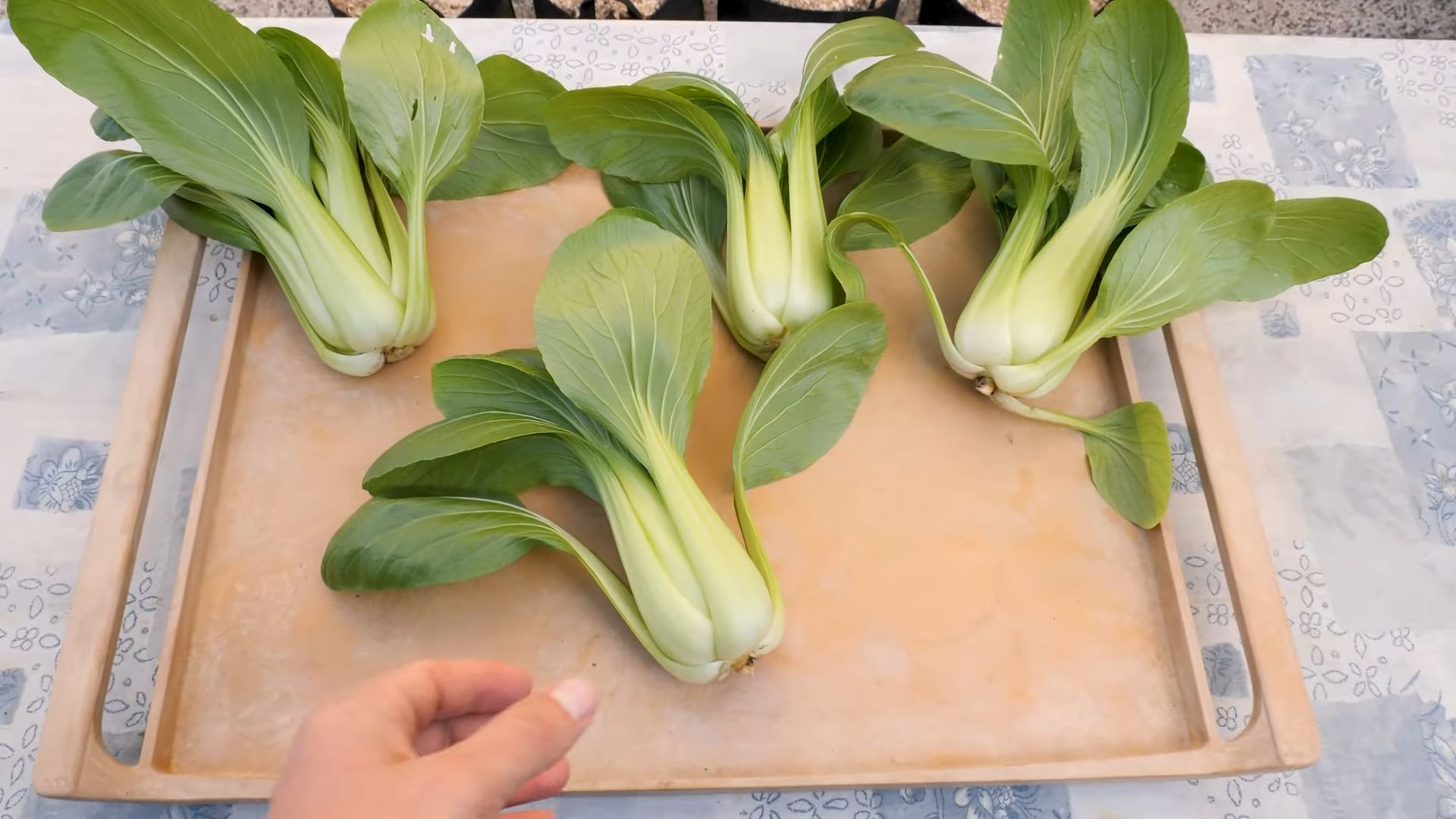
Harvesting Bok Choy Like a Pro: A DIY Guide
Hey there, fellow gardeners! Bok choy, also known as pak choi, is a fantastic addition to any garden. It’s relatively easy to grow, packed with nutrients, and incredibly versatile in the kitchen. But knowing when and how to harvest it properly is key to enjoying its fresh, crisp flavor. I’m going to walk you through everything you need to know to harvest your bok choy like a seasoned pro.
Understanding Bok Choy Growth and Maturity
Before we dive into the harvesting process, it’s important to understand how bok choy grows. Bok choy is a cool-season crop, meaning it thrives in cooler temperatures. It typically matures in about 45-60 days from planting, depending on the variety and growing conditions.
* Size Matters (Sort Of): While the days to maturity are a good guideline, the best indicator of readiness is the size of the plant. You can harvest bok choy at different stages of maturity, depending on your preference.
* Baby Bok Choy: If you prefer smaller, more tender leaves, you can harvest baby bok choy when it’s about 4-6 inches tall.
* Mature Bok Choy: For larger, more robust plants, wait until they reach 12-18 inches in height.
* Bolting: Keep a close eye on your bok choy, especially as the weather warms up. Bolting (going to seed) can make the leaves bitter. If you see a flower stalk starting to form, harvest immediately.
Tools You’ll Need
Luckily, you don’t need a ton of fancy equipment to harvest bok choy. Here’s what I recommend:
* Sharp Knife or Garden Shears: A sharp blade is essential for a clean cut, which helps prevent disease and encourages regrowth (if you’re harvesting outer leaves).
* Gloves (Optional): While not strictly necessary, gloves can protect your hands from dirt and any potential irritants.
* Basket or Bag: To collect your freshly harvested bok choy.
* Water (Optional): For rinsing off any dirt or debris.
Step-by-Step Harvesting Guide
Okay, let’s get down to the nitty-gritty of harvesting! I’ll break it down into easy-to-follow steps.
1. Assess Your Bok Choy: Take a good look at your plants. Are they the size you want? Are they showing any signs of bolting? This will help you decide which plants to harvest and how much to take.
2. Choose Your Harvesting Method: You have two main options:
* Whole Plant Harvest: This involves cutting the entire plant at the base. It’s ideal if you want to harvest the entire plant at once or if you see signs of bolting.
* Outer Leaf Harvest: This involves harvesting only the outer leaves, allowing the plant to continue growing and producing more leaves. This is a great option for a continuous harvest over a longer period.
3. Harvesting the Whole Plant:
* Locate the Base: Find the base of the plant where the stem meets the soil.
* Make the Cut: Using your sharp knife or garden shears, make a clean cut across the base of the plant, about 1-2 inches above the soil line.
* Gently Lift: Carefully lift the entire plant from the ground.
* Remove Debris: Gently shake off any excess soil or debris from the plant.
4. Harvesting Outer Leaves:
* Identify Mature Leaves: Look for the largest, most mature outer leaves. These are usually the ones closest to the ground.
* Make the Cut: Using your sharp knife or garden shears, cut the leaves at the base of the stem, close to the main stalk. Be careful not to damage the central bud, as this is where new leaves will grow.
* Leave the Center Intact: Make sure to leave the central bud and inner leaves intact so the plant can continue to produce.
* Don’t Over-Harvest: Avoid taking more than 1/3 of the leaves at any one time. This will help ensure the plant has enough energy to continue growing.
5. Rinsing and Cleaning (Optional):
* Rinse Gently: If your bok choy is dirty, gently rinse it with cool water.
* Pat Dry: Pat the leaves dry with a clean towel or paper towel. This will help prevent them from becoming soggy.
6. Storing Your Harvest:
* Short-Term Storage: For short-term storage (1-3 days), wr
Hey there, fellow gardeners! Bok choy, also known as pak choi, is a fantastic addition to any garden. It’s relatively easy to grow, packed with nutrients, and incredibly versatile in the kitchen. But knowing when and how to harvest it properly is key to enjoying its fresh, crisp flavor. I’m going to walk you through everything you need to know to harvest your bok choy like a seasoned pro.
Understanding Bok Choy Growth and Maturity
Before we dive into the harvesting process, it’s important to understand how bok choy grows. Bok choy is a cool-season crop, meaning it thrives in cooler temperatures. It typically matures in about 45-60 days from planting, depending on the variety and growing conditions.
* Size Matters (Sort Of): While the days to maturity are a good guideline, the best indicator of readiness is the size of the plant. You can harvest bok choy at different stages of maturity, depending on your preference.
* Baby Bok Choy: If you prefer smaller, more tender leaves, you can harvest baby bok choy when it’s about 4-6 inches tall.
* Mature Bok Choy: For larger, more robust plants, wait until they reach 12-18 inches in height.
* Bolting: Keep a close eye on your bok choy, especially as the weather warms up. Bolting (going to seed) can make the leaves bitter. If you see a flower stalk starting to form, harvest immediately.
Tools You’ll Need
Luckily, you don’t need a ton of fancy equipment to harvest bok choy. Here’s what I recommend:
* Sharp Knife or Garden Shears: A sharp blade is essential for a clean cut, which helps prevent disease and encourages regrowth (if you’re harvesting outer leaves).
* Gloves (Optional): While not strictly necessary, gloves can protect your hands from dirt and any potential irritants.
* Basket or Bag: To collect your freshly harvested bok choy.
* Water (Optional): For rinsing off any dirt or debris.
Step-by-Step Harvesting Guide
Okay, let’s get down to the nitty-gritty of harvesting! I’ll break it down into easy-to-follow steps.
1. Assess Your Bok Choy: Take a good look at your plants. Are they the size you want? Are they showing any signs of bolting? This will help you decide which plants to harvest and how much to take.
2. Choose Your Harvesting Method: You have two main options:
* Whole Plant Harvest: This involves cutting the entire plant at the base. It’s ideal if you want to harvest the entire plant at once or if you see signs of bolting.
* Outer Leaf Harvest: This involves harvesting only the outer leaves, allowing the plant to continue growing and producing more leaves. This is a great option for a continuous harvest over a longer period.
3. Harvesting the Whole Plant:
* Locate the Base: Find the base of the plant where the stem meets the soil.
* Make the Cut: Using your sharp knife or garden shears, make a clean cut across the base of the plant, about 1-2 inches above the soil line.
* Gently Lift: Carefully lift the entire plant from the ground.
* Remove Debris: Gently shake off any excess soil or debris from the plant.
4. Harvesting Outer Leaves:
* Identify Mature Leaves: Look for the largest, most mature outer leaves. These are usually the ones closest to the ground.
* Make the Cut: Using your sharp knife or garden shears, cut the leaves at the base of the stem, close to the main stalk. Be careful not to damage the central bud, as this is where new leaves will grow.
* Leave the Center Intact: Make sure to leave the central bud and inner leaves intact so the plant can continue to produce.
* Don’t Over-Harvest: Avoid taking more than 1/3 of the leaves at any one time. This will help ensure the plant has enough energy to continue growing.
5. Rinsing and Cleaning (Optional):
* Rinse Gently: If your bok choy is dirty, gently rinse it with cool water.
* Pat Dry: Pat the leaves dry with a clean towel or paper towel. This will help prevent them from becoming soggy.
6. Storing Your Harvest:
* Short-Term Storage: For short-term storage (1-3 days), wrap the bok choy in a damp paper towel and store it in a plastic bag in the refrigerator.
* Long-Term Storage: For longer-term storage (up to a week), you can store bok choy in the refrigerator in a plastic bag with a few holes for ventilation. Avoid storing it near fruits like apples or bananas, as they release ethylene gas, which can cause the bok choy to spoil faster.
Troubleshooting Common Harvesting Issues
Even with the best instructions, sometimes things don’t go exactly as planned. Here are a few common issues you might encounter and how to deal with them:
* Bolting: As I mentioned earlier, bolting can make the leaves bitter. If you see signs of bolting, harvest the entire plant immediately, even if it’s not as large as you’d like. You can still use the leaves, but be aware that they may have a slightly bitter taste.
* Pest Damage: Check your bok choy for signs of pest damage, such as holes in the leaves or discoloration. If you find pests, try to identify them and take appropriate action, such as using insecticidal soap or hand-picking them off the plants.
* Disease: Bok choy can be susceptible to certain diseases, such as downy mildew or clubroot. If you see signs of disease, remove the affected leaves and dispose of them properly. Avoid composting diseased plants, as this can spread the disease to other plants.
* Tough Leaves: If you’re harvesting mature bok choy and find that the leaves are tough, try cooking them for a longer period of time. You can also remove the tough stems and use only the leaves.
Encouraging Regrowth After Harvesting
If you’ve chosen to harvest outer leaves, you can encourage regrowth by providing your bok choy with proper care. Here are a few tips:
* Water Regularly: Keep the soil consistently moist, but not waterlogged.
* Fertilize: Feed your bok choy with a balanced fertilizer every few weeks to provide it with the nutrients it needs to grow.
* Weed Regularly: Remove any weeds that are competing with your bok choy for nutrients and water.
* Protect from Pests and Diseases: Keep an eye out for pests and diseases and take action to control them as needed.
Bok Choy Varieties and Harvesting Considerations
Different bok choy varieties may have slightly different harvesting considerations. Here are a few popular varieties and some things to keep in mind:
* Shanghai Bok Choy: This variety has light green stems and spoon-shaped leaves. It’s known for its mild flavor and tender texture. You can harvest Shanghai bok choy at any stage of maturity, but it’s best when the leaves are about 4-6 inches long.
* Ching Chiang Bok Choy: This variety has dark green leaves and thick, white stems. It’s known for its crisp texture and slightly peppery flavor. Ching Chiang bok choy is best harvested when the plants are about 8-12 inches tall.
* Joi Choi Bok Choy: This variety is a hybrid that’s known for its heat tolerance and resistance to bolting. It has dark green leaves and thick, white stems. Joi Choi bok choy can be harvested at any stage of maturity, but it’s best when the plants are about 12-18 inches tall.
Using Your Freshly Harvested Bok Choy
Now that you’ve harvested your bok choy, it’s time to enjoy it! Bok choy is incredibly versatile and can be used in a variety of dishes. Here are a few ideas:
* Stir-fries: Bok choy is a classic ingredient in stir-fries. It adds a crisp texture and mild flavor that complements other vegetables and proteins.
* Soups: Bok choy can be added to soups for extra nutrients and flavor. It’s especially good in Asian-inspired soups like miso soup or ramen.
* Salads: Baby bok choy can be used in salads for a tender and slightly sweet flavor.
* Steamed or Sautéed: Bok choy can be steamed or sautéed as a simple and healthy side dish.
* Grilled: Grilled bok choy is a
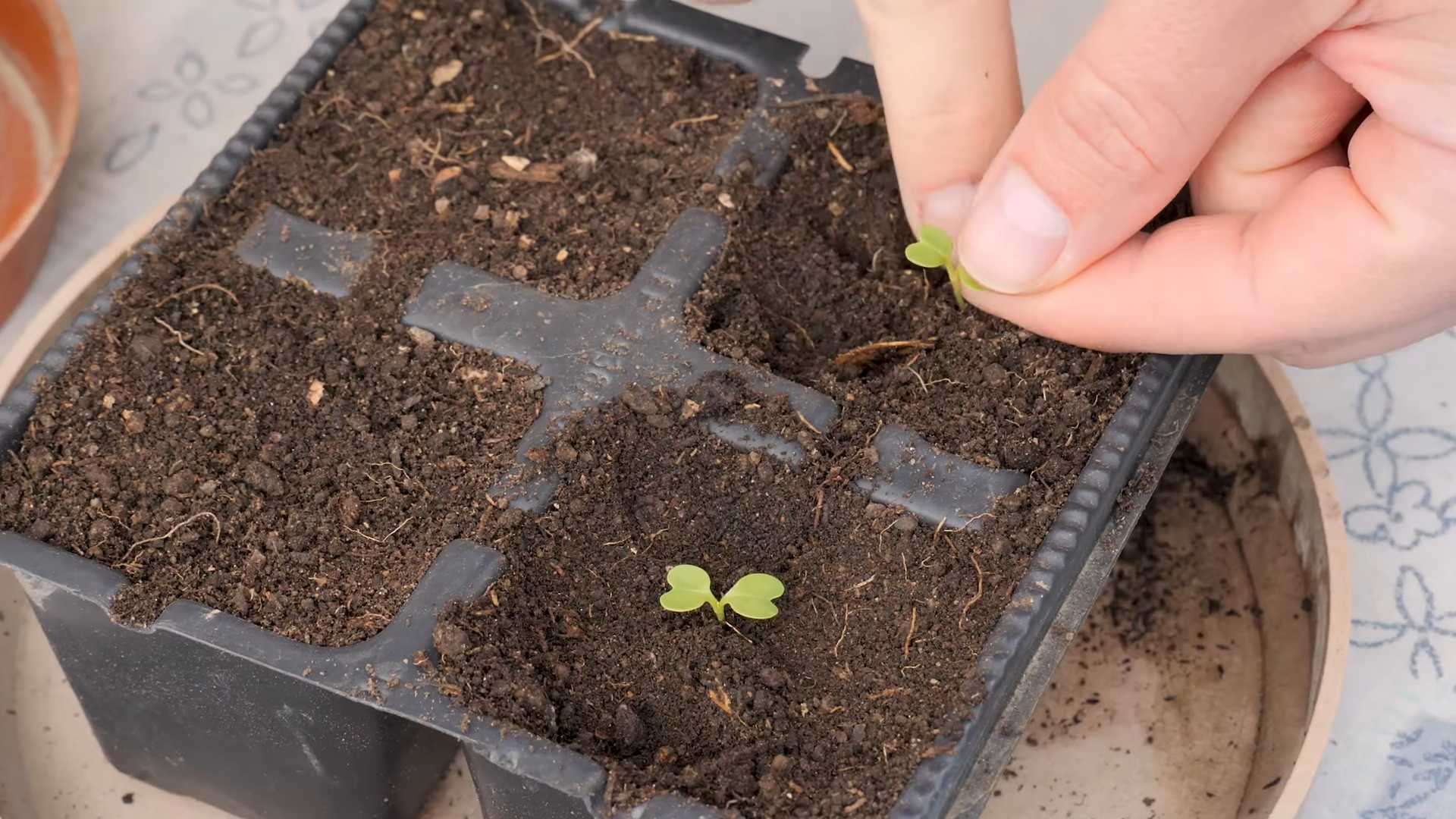
Conclusion
So, there you have it! Mastering the art of harvesting bok choy from your own garden or even a container on your balcony is not only incredibly rewarding but also surprisingly simple. We’ve walked you through the steps, highlighting the key indicators of ripeness and the best techniques for ensuring a continuous harvest. But why is this DIY trick a must-try?
Firstly, the flavor. Store-bought bok choy simply cannot compare to the crisp, fresh taste of homegrown. The subtle sweetness and delicate texture are amplified when you harvest it yourself, moments before adding it to your favorite stir-fry, soup, or salad. You’re in control of the entire process, from seed to plate, guaranteeing a level of quality and freshness that’s unmatched.
Secondly, it’s economical. Once you’ve established your bok choy plants, you can enjoy multiple harvests throughout the growing season. This significantly reduces your grocery bill and provides a sustainable source of nutritious greens for your family. Think of all the delicious and healthy meals you can create!
Thirdly, it’s empowering. There’s a unique satisfaction that comes from growing your own food. It connects you to nature, teaches you valuable skills, and fosters a deeper appreciation for the food you eat. Harvesting your own bok choy is a small but significant step towards a more self-sufficient and sustainable lifestyle.
But the benefits don’t stop there. By harvesting bok choy strategically, you can encourage continued growth and extend your harvest season. Remember to harvest the outer leaves first, allowing the inner leaves to mature. This cut-and-come-again method ensures a steady supply of fresh greens for weeks, even months, depending on your climate.
Looking for variations? Consider these ideas:
* Baby Bok Choy: Harvest the entire plant when it’s young and tender for a delicate and flavorful addition to salads.
* Flowering Bok Choy: Allow some of your bok choy plants to bolt (flower). The flowering stalks are edible and offer a slightly different flavor profile.
* Companion Planting: Plant your bok choy alongside other vegetables like lettuce, spinach, and radishes to create a thriving and diverse garden ecosystem.
We’re confident that once you try harvesting your own bok choy, you’ll be hooked. It’s a simple, rewarding, and delicious way to connect with nature and enjoy the freshest possible greens.
So, what are you waiting for? Grab your gardening gloves, head out to your garden, and start harvesting! We encourage you to try this DIY trick and share your experience with us. Let us know how your bok choy harvest went, what delicious dishes you created, and any tips or tricks you discovered along the way. Share your photos and stories on social media using [Your Hashtag Here] – we can’t wait to see what you create! Happy harvesting!
Frequently Asked Questions (FAQ)
How do I know when my bok choy is ready to harvest?
The ideal time to harvest bok choy depends on your preference for size and tenderness. Generally, bok choy is ready to harvest when the leaves are about 6-8 inches long. The leaves should be a vibrant green color and feel firm to the touch. You can harvest the entire plant at once, or you can use the “cut-and-come-again” method, harvesting the outer leaves as needed and allowing the inner leaves to continue growing. For baby bok choy, harvest when the plants are smaller, around 4-6 inches tall. Avoid harvesting if the plant has bolted (started to flower) significantly, as the leaves may become bitter.
What’s the best way to harvest bok choy without damaging the plant?
The key to successful bok choy harvesting is to be gentle and precise. For a full harvest, use a sharp knife or garden shears to cut the entire plant at the base, about an inch above the soil line. For the “cut-and-come-again” method, carefully select the outer leaves you want to harvest and cut them individually at the base of the stem, close to the main stalk. Avoid tearing the leaves, as this can damage the plant and make it more susceptible to disease. Always use clean tools to prevent the spread of pathogens.
How often can I harvest bok choy?
If you’re using the “cut-and-come-again” method, you can harvest bok choy leaves every week or two, depending on how quickly they grow. The more frequently you harvest, the more the plant will be stimulated to produce new growth. Ensure you are providing adequate water and nutrients to support continued growth. If you harvest the entire plant at once, you’ll need to replant if you want another crop.
My bok choy is bolting (flowering). Can I still eat it?
Yes, you can still eat bok choy that has bolted, but the flavor may be slightly different. Bolting occurs when the plant is stressed, usually due to heat or lack of water. The leaves may become more bitter, but they are still safe to eat. You can try removing the flower stalks to encourage the plant to produce more leaves, but once bolting has started, it’s difficult to reverse. The flower stalks themselves are also edible and can be used in stir-fries or salads.
How do I store harvested bok choy to keep it fresh?
To keep harvested bok choy fresh, wash it thoroughly and pat it dry with a clean towel. Wrap the bok choy in a damp paper towel and place it in a plastic bag or container in the refrigerator. This will help to keep the leaves hydrated and prevent them from wilting. Bok choy can typically be stored in the refrigerator for up to a week.
What are some common problems that can affect bok choy growth and harvesting?
Some common problems that can affect bok choy growth include pests like aphids, slugs, and cabbage worms, as well as diseases like downy mildew and clubroot. To prevent these problems, choose disease-resistant varieties, practice crop rotation, and keep your garden clean and free of debris. Regularly inspect your plants for signs of pests or diseases and take appropriate action if necessary. Ensure your bok choy receives adequate sunlight, water, and nutrients.
Can I grow bok choy in containers?
Yes, bok choy grows very well in containers, making it a great option for gardeners with limited space. Choose a container that is at least 6-8 inches deep and wide, and fill it with a well-draining potting mix. Be sure to provide adequate water and fertilizer, as container-grown plants tend to dry out and deplete nutrients more quickly than those grown in the ground. Place the container in a location that receives at least 6 hours of sunlight per day.
What are some good companion plants for bok choy?
Bok choy benefits from being planted alongside several companion plants. Aromatic herbs like rosemary, sage, and thyme can help to repel pests. Marigolds are also effective at deterring nematodes and other soil-borne pests. Lettuce, spinach, and radishes are good companion plants because they have different growth habits and nutrient requirements, which can help to prevent competition. Avoid planting bok choy near members of the brassica family, such as broccoli, cauliflower, and cabbage, as they can attract the same pests and diseases.
How do I fertilize bok choy for optimal growth and harvest?
Bok choy benefits from regular fertilization to support its rapid growth. Before planting, amend the soil with compost or other organic matter to improve its fertility. During the growing season, fertilize your bok choy every 2-3 weeks with a balanced fertilizer or a fertilizer specifically formulated for leafy greens. Follow the instructions on the fertilizer package carefully to avoid over-fertilizing, which can damage the plants. You can also use liquid seaweed or fish emulsion as a foliar feed to provide additional nutrients.
What if my bok choy tastes bitter?
Bitterness in bok choy can be caused by several factors, including bolting, stress from heat or drought, and nutrient deficiencies. To prevent bitterness, choose heat-tolerant varieties, provide adequate water and shade during hot weather, and fertilize your plants regularly. Harvesting bok choy in the cooler parts of the day can also help to reduce bitterness. If your bok choy is already bitter, you can try blanching it briefly in boiling water before cooking to help remove some of the bitterness.

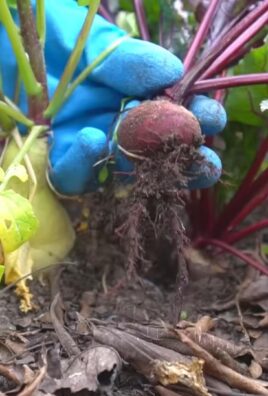
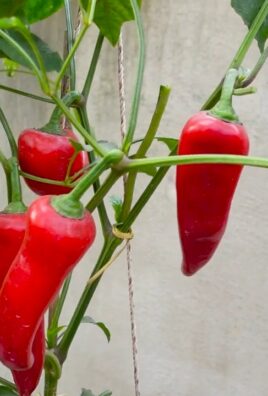
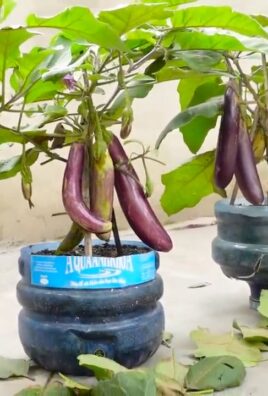
Leave a Comment